Saudi Arabia, strategically located between Europe, Asia, and Africa, serves as a pivotal hub for international trade in the region. The country’s extensive coastline along the Red Sea and the Arabian Gulf hosts several major ports that facilitate the movement of goods and drive economic growth. Prominent among these are the Jeddah Islamic Port, Dammam Port, and Jubail Commercial Port, each playing a crucial role in accommodating the diverse cargo needs of various industries.
As Saudi Arabia continues to diversify its economy and strengthen its position in international trade, understanding the operational dynamics and significance of its major ports is essential. This overview will delve deeper into the various ports along the Arabian Gulf and Red Sea, highlighting their historical backgrounds, key facilities, cargo handled, and the overarching role of the Saudi Ports Authority in shaping the future of maritime trade in the Kingdom.
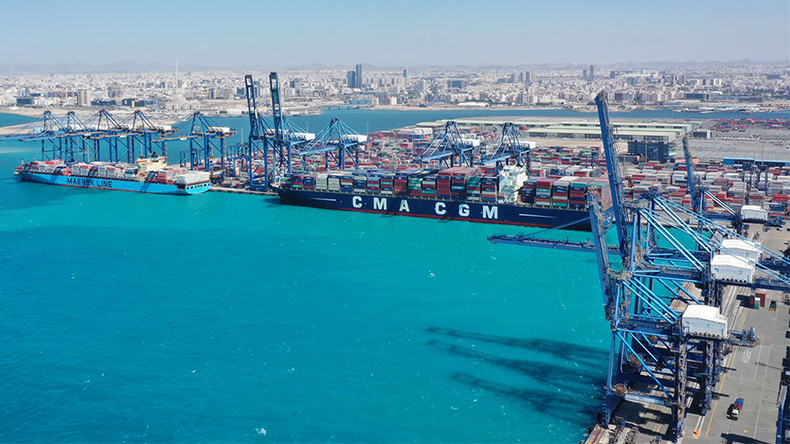
Overview of Major Ports in Saudi Arabia
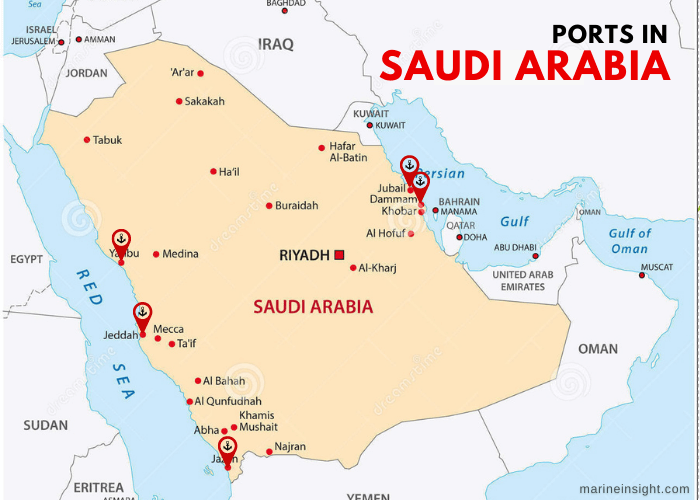
Number and Distribution of Ports in Saudi Arabia
Saudi Arabia boasts several significant ports that play a crucial role in its global trade and economic development. The country has more than 11 major ports, which include both maritime and inland ports, distributed along the Red Sea and the Arabian Gulf. Key ports include:
- Jeddah Port: As the busiest port in Saudi Arabia, Jeddah Port serves as an essential trade hub on the Red Sea, handling nearly 60% of the country’s maritime cargo.
- Dammam Port: Located on the Arabian Gulf, Dammam is a vital port for eastern Saudi Arabia, primarily servicing the oil and petrochemical industries.
- Riyadh Port: Although situated inland, Riyadh Port is connected to major ports via rail and road and serves as a significant logistics center for the capital.
The distribution of these ports helps reduce transportation time and costs, thereby enhancing Saudi Arabia’s competitiveness in international trade. For more information on Saudi Arabian ports, you can refer to our Ocean Freight services.
Role of Ports in the Saudi Economy
Ports occupy a critical position in the Saudi Arabian economy. With the Saudi government implementing its “Vision 2030” initiative aimed at diversifying the economy and reducing reliance on oil, the role of ports has become increasingly significant. Here are several key functions of ports in the Saudi economy:
- Hub for International Trade: Saudi ports facilitate the import and export of goods both domestically and internationally, promoting connectivity with global markets. According to statistics, Saudi ports handle millions of tons of cargo each year, which is vital for economic growth.
- Attracting Investment: Quality infrastructure and efficient freight services attract substantial foreign investment, particularly in the logistics, manufacturing, and service sectors. Ongoing modernization projects at the ports will further enhance their appeal.
- Job Creation: The operation and management of ports require a large workforce, creating numerous job opportunities for local residents. This not only elevates local economic levels but also provides young individuals with career development platforms.
- Boosting Tourism Development: Certain ports, especially Jeddah Port, have been developed as cruise ports, attracting international tourists and injecting new vitality into Saudi Arabia’s tourism industry.
Major Ports on the Red Sea
1. Jeddah Islamic Port in Saudi Arabia
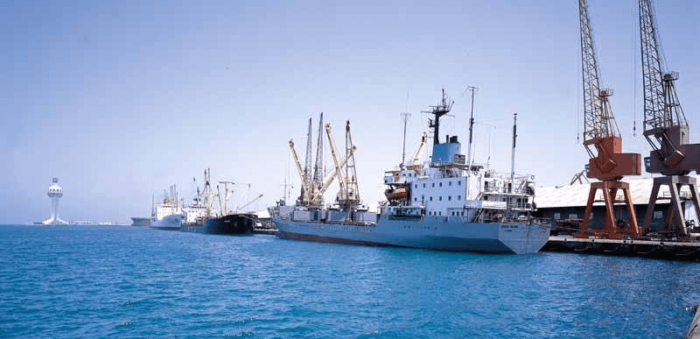
Jeddah Islamic Port is one of the oldest and most significant ports in Saudi Arabia, established over 2,000 years ago. Located in the city of Jeddah, it serves as the principal sea gateway for the Kingdom and is strategically situated along the Red Sea, making it a crucial point for trade routes linking Europe, Asia, and Africa.
Key Facilities and Features
The port features modern infrastructure, including multiple container terminals equipped with advanced technology for efficient cargo handling. It has a total quay length of approximately 8,000 meters and can accommodate large vessels, including mega container ships. Additionally, the port offers customs clearance services, warehousing, and logistics facilities to streamline supply chain operations.
Types of Cargo Handled and Annual Throughput
Jeddah Islamic Port handles a wide variety of cargo types, including containerized cargo, bulk cargo, and general cargo. The annual throughput of the port is significant, with estimates of around 7 million TEUs (Twenty-foot Equivalent Units) annually, making it one of the busiest ports in the region.
2. King Fahd Industrial Port in Yanbu
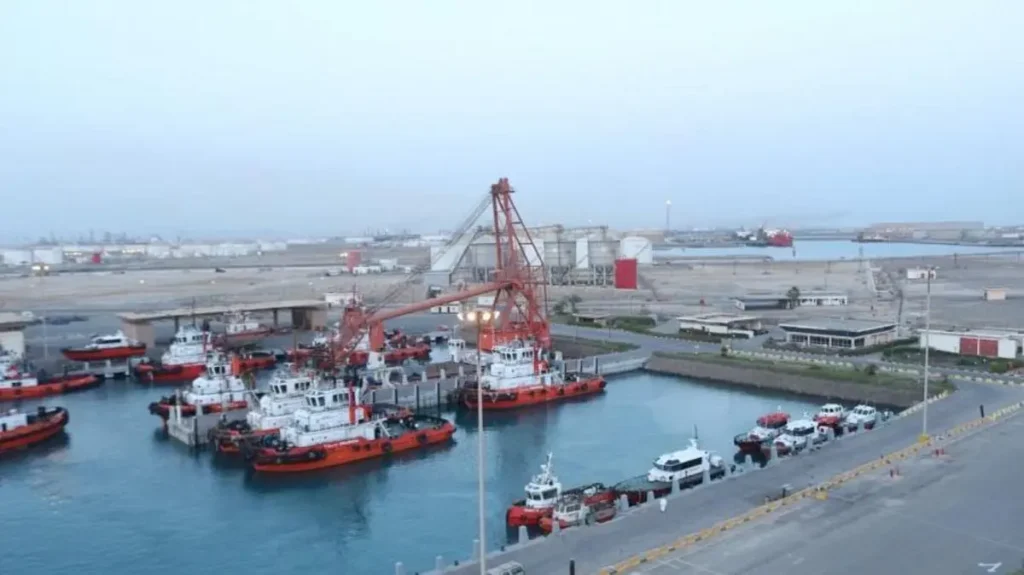
King Fahd Industrial Port is situated in Yanbu, a city on the western coast of Saudi Arabia. Established in the 1970s, it was specifically built to support the industrial sector in the region, particularly oil and petrochemical industries. Its location along the Red Sea provides easy access for shipping routes.
Key Facilities and Features
The port is equipped with advanced facilities, including dedicated terminals for liquid bulk and dry bulk cargo. It features a total quay length of approximately 5,000 meters and is designed to accommodate large tankers and bulk carriers. The port also includes logistics services and customs clearance facilities, ensuring smooth operations for various industries.
Types of Cargo Handled and Annual Throughput
King Fahd Industrial Port predominantly handles crude oil, refined petroleum products, and petrochemical materials. Its annual throughput is substantial, with estimates reaching 20 million tons of cargo, primarily driven by the industrial activities in the region.
3. Yanbu Commercial Port in Saudi Arabia
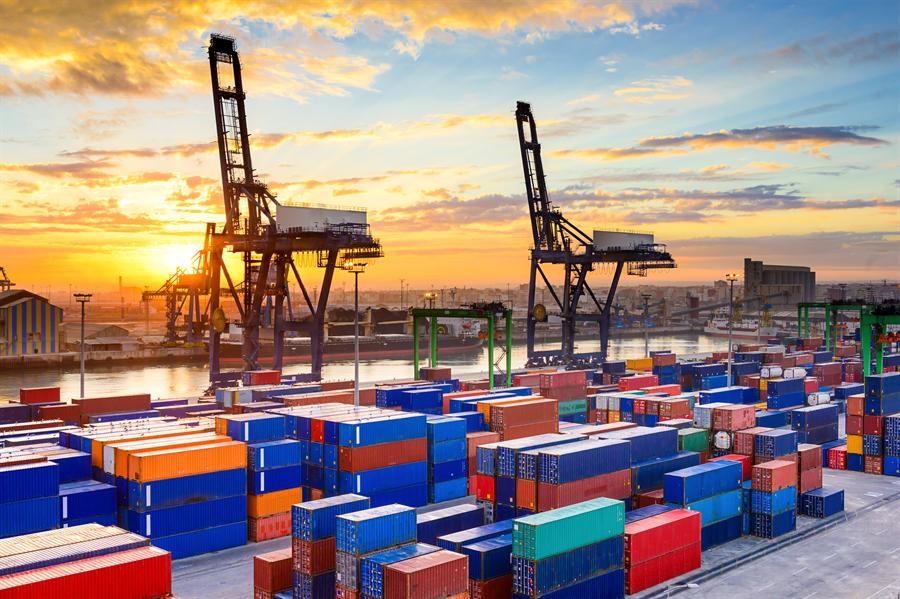
Yanbu Commercial Port, also located in the city of Yanbu, serves as a key commercial hub for trade in the western region of Saudi Arabia. Established in the mid-20th century, it functions alongside the King Fahd Industrial Port to facilitate commercial activities.
Key Facilities and Features
The port features a well-developed infrastructure, including multiple berths for accommodating various types of vessels. It has modern cargo handling equipment and offers services such as warehousing, container handling, and customs processing.
Types of Cargo Handled and Annual Throughput
Yanbu Commercial Port primarily handles general cargo, containers, and bulk materials. The annual throughput for this port is estimated at around 3 million TEUs, contributing significantly to the local economy.
4. Jazan/Jizan Port in Saudi Arabia
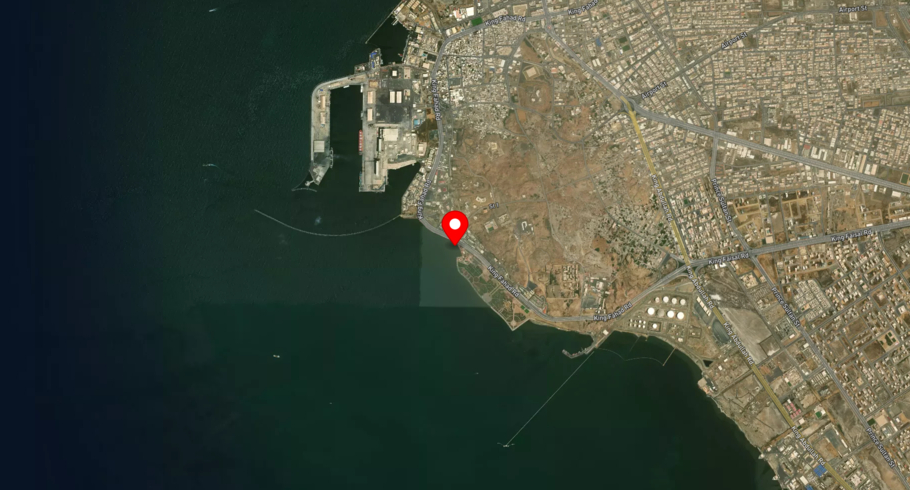
Jazan Port, located in the Jazan region in the southwestern part of Saudi Arabia, was established to support the local economy and facilitate trade. Its strategic position along the Red Sea makes it an important entry point for goods destined for the region.
Key Facilities and Features
The port is equipped with modern facilities, including container terminals and cargo handling equipment. Jazan Port has a quay length of approximately 1,200 meters and is designed to handle various types of cargo efficiently.
Types of Cargo Handled and Annual Throughput
Jazan Port handles a diverse range of cargo, including general cargo, bulk materials, and containers. The annual throughput of the port is estimated to be around 1 million TEUs, which plays a crucial role in supporting the local economy and trade activities.
5. Duba Port in Saudi Arabia
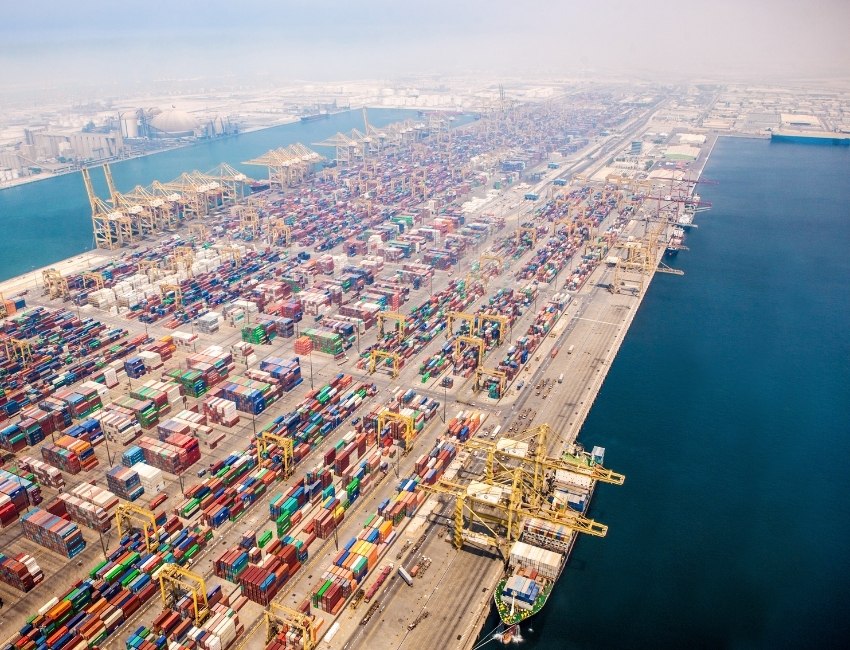
Duba Port is located in the northwestern part of Saudi Arabia along the Red Sea coast. Established in the early 20th century, it has historically served as a fishing and trading port, later transitioning to support commercial activities.
Key Facilities and Features
Duba Port features modern cargo handling facilities with a total quay length of approximately 800 meters. The port is equipped to handle various types of vessels and offers services such as customs clearance and logistics support.
Types of Cargo Handled and Annual Throughput
Duba Port predominantly handles general cargo, fishing products, and bulk materials. The annual throughput for Duba Port is estimated to be around 500,000 tons, contributing to the local fishing industry and trade activities in the region.
Shipping From China to Middle East Countries:
- Shipping from China to Saudi Arabia
- Shipping from China to UAE
- Shipping from china to KUWAIT
- Shipping From China To EGYPT
- Shipping from China to Bahrain
- Shipping From China To Jordan
- Shipping From China To Israel
- Shipping from China to Qatar
- Shipping From China To IRAQ
- Shipping from China to Iran
Major Ports on the Arabian Gulf
1. King Abdul Aziz Port / Dammam Port
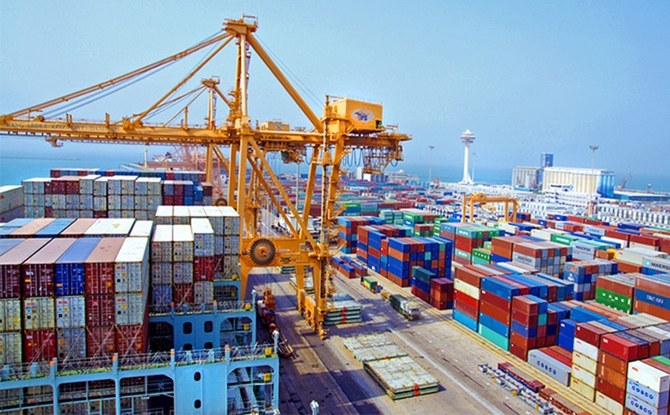
King Abdul Aziz Port, commonly known as Dammam Port, is situated in Dammam, the capital of the Eastern Province of Saudi Arabia. Established in 1976, the port was designed to serve as a primary gateway for goods entering and exiting the eastern region of the Kingdom. Due to its strategic location on the Arabian Gulf, it provides easy access to major international shipping routes, facilitating trade with various countries.
Key Facilities and Features
Dammam Port is equipped with state-of-the-art facilities, including multiple container terminals, bulk cargo handling areas, and liquid cargo terminals. The port features a quay length of approximately 3,000 meters, with a total of 12 berths that can accommodate large vessels, including container ships and tankers. In addition to cargo handling, the port offers customs clearance services, storage facilities, and logistic support to streamline operations.
Types of Cargo Handled and Annual Throughput
King Abdul Aziz Port primarily handles containerized cargo, bulk cargo, and liquid shipments. It has an impressive annual throughput, estimated at around 9 million TEUs (Twenty-foot Equivalent Units) and approximately 20 million tons of bulk cargo, making it one of the busiest ports in the Arabian Gulf.
2. Jubail Commercial Port
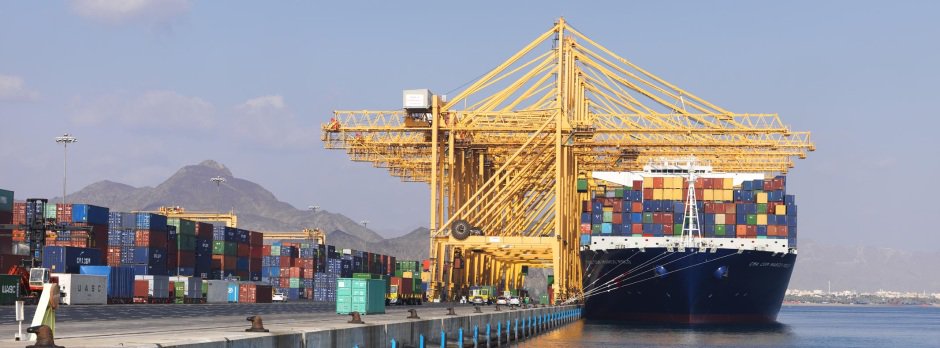
Jubail Commercial Port is located in the city of Jubail, which is part of the Eastern Province of Saudi Arabia. Established in 1975, the port was built as part of the government’s effort to develop industrial projects in the region, primarily focusing on petrochemical production. Its strategic coastal location along the Arabian Gulf enhances its importance in facilitating trade.
Key Facilities and Features
The port boasts a modern infrastructure with multiple berths designed for handling various types of cargo. Jubail Commercial Port includes facilities for container handling, general cargo, and bulk materials. The port is equipped with advanced cargo handling equipment and has a total quay length of approximately 2,600 meters.
Types of Cargo Handled and Annual Throughput
Jubail Commercial Port mainly handles industrial products, including petrochemicals, general cargo, and containers. The annual throughput is significant, with estimates of around 4 million TEUs and 10 million tons of bulk cargo, making it a vital component of the Kingdom’s industrial supply chain.
3. King Fahd Industrial Port in Jubail
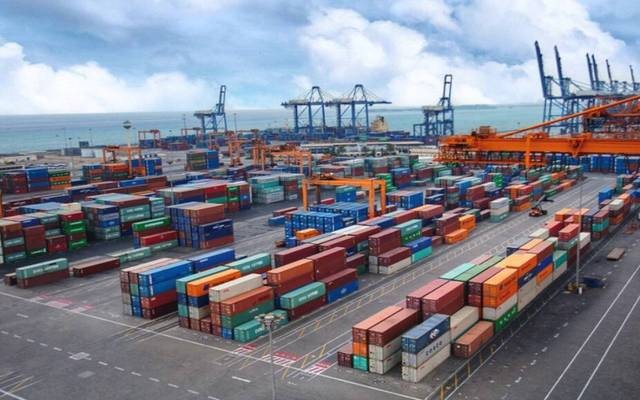
King Fahd Industrial Port is strategically located adjacent to Jubail Industrial City, Saudi Arabia’s largest industrial complex. Opened in 1991, the port was developed specifically to support the industrial activities in the region, particularly petrochemical and heavy industry operations, aligning with the country’s economic diversification goals.
Key Facilities and Features
This port features specialized terminals for handling liquid and dry bulk cargo, including chemicals, crude oil, and refined products. King Fahd Industrial Port has a total quay length of approximately 5,000 meters, equipped with advanced loading and unloading systems that cater to large oil tankers and bulk carriers.
Types of Cargo Handled and Annual Throughput
The port primarily handles liquid bulk cargo, chemicals, and other industrial materials. Its annual throughput is substantial, with estimates reaching 20 million tons, primarily driven by the industrial activities in Jubail Industrial City.
4. Ras Tanura Port
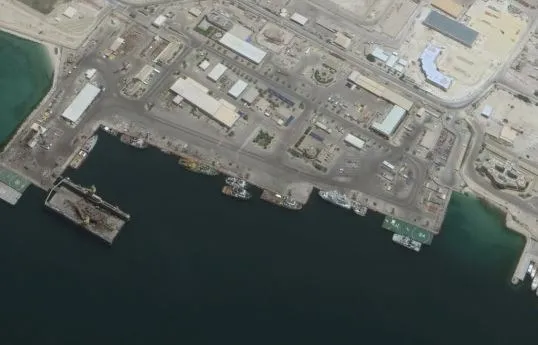
Ras Tanura Port is one of the oldest and most significant ports in Saudi Arabia, established in the 1930s. Located in the Eastern Province, the port is operated by Saudi Aramco and primarily serves as a key export terminal for crude oil and refined petroleum products. Its location on the Arabian Gulf makes it strategically important for oil shipments.
Key Facilities and Features
Ras Tanura Port is equipped with extensive facilities for handling large oil tankers and various cargo types. The port has a total quay length of approximately 3,500 meters and features specialized terminals for crude oil and refined products, as well as storage facilities. It includes loading arms and deep-water berths, ensuring efficient operations for large volumes of cargo.
Types of Cargo Handled and Annual Throughput
Ras Tanura Port primarily handles crude oil, refined petroleum products, and chemical shipments. The annual throughput of the port is significant, with estimates around 20 million tons, making it a critical part of Saudi Arabia’s oil export infrastructure.
Port Management and Operations

Role of the Saudi Ports Authority
The Saudi Ports Authority (SPA) plays a vital role in the oversight and management of ports across Saudi Arabia. Established to streamline and enhance the efficiency of port operations, the authority is responsible for setting regulatory frameworks, implementing policies, and ensuring compliance with international maritime standards. The SPA’s primary objectives include:
- Development and Modernization: The SPA focuses on the continuous development and modernization of port facilities to meet the growing demands of global trade. This includes investing in advanced technologies, optimizing existing infrastructure, and expanding capacity to handle increasing cargo volumes.
- Regulatory Oversight: The authority oversees compliance with national and international maritime regulations, ensuring that ports operate within safety and environmental standards. This involves monitoring activities related to customs clearance, security, and health regulations, which are essential for maintaining the integrity of shipping operations.
- Facilitation of Trade: By promoting efficient port operations, the SPA facilitates smooth trade flows and reduces turnaround times for vessels. The authority works closely with various stakeholders, including shipping lines, freight forwarders, and logistics companies, to streamline processes such as cargo handling and customs clearance.
- Strategic Planning: The SPA is responsible for long-term strategic planning aimed at enhancing the competitiveness of Saudi ports on a global scale. This includes assessing market trends, forecasting demand, and identifying key areas for investment and development.
- Capacity Building: The authority also emphasizes human resource development within the maritime sector. By providing training and capacity-building programs, the SPA enhances the skills of the workforce involved in port operations, ensuring that they are equipped to meet the demands of the evolving global shipping landscape.
Management Policies and Operational Models
The management policies and operational models employed by the Saudi Ports Authority are designed to enhance efficiency, improve service quality, and optimize resource utilization within the country’s ports. Key elements of these policies include:
- Public-Private Partnerships (PPP): The SPA encourages investments through public-private partnerships, which leverage private sector expertise and capital to improve port infrastructure and services. This collaborative approach allows for the efficient development of port facilities while minimizing public expenditure.
- Integrated Port Management: The SPA promotes an integrated approach to port management, focusing on coordination among various stakeholders involved in port operations. This includes collaboration with customs authorities, shipping companies, and terminal operators to ensure seamless logistics and cargo handling processes.
- Investment in Technology: Emphasizing the importance of technology in port operations, the SPA has implemented modern management systems that enhance operational efficiency. This includes the use of automated systems for cargo tracking, real-time data analytics for decision-making, and digital platforms for communication among stakeholders.
- Sustainability Initiatives: The SPA is committed to implementing sustainable practices within port operations. This involves reducing the environmental impact of port activities through the adoption of eco-friendly technologies, waste management systems, and energy-efficient practices, in alignment with global sustainability goals.
- Performance Metrics and Continuous Improvement: The authority utilizes key performance indicators (KPIs) to evaluate the efficiency and effectiveness of port operations. Regular assessments allow for the identification of areas for improvement, ensuring that ports continuously adapt to changing market needs and operational challenges.
Development and Future Plans
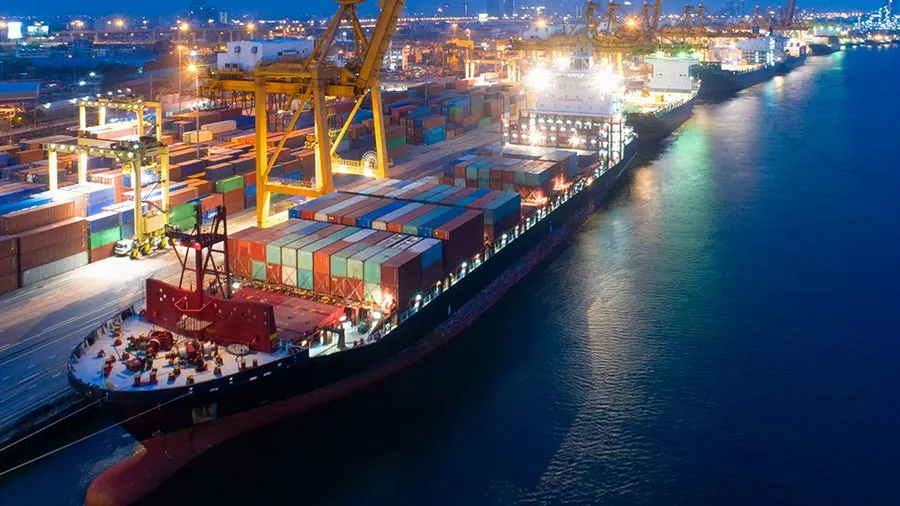
Expansion and modernization plans for existing ports
Saudi Arabia has ambitious plans to expand and modernize its existing ports:
- Jeddah Islamic Port (JIP) is undergoing significant expansion. DP World is working on modernizing the South Container Terminal, which will increase the port’s container handling capacity from 2.4 million TEUs to 4 million TEUs by 2024.
- The Red Sea Gateway Terminal (RSGT) at JIP has plans to increase capacity to 5.2 million TEUs by 2023, with further expansion to 8.8 million TEUs planned by 2049.
- At King Abdulaziz Port in Dammam, a massive SR7 billion ($1.9 billion) project has been launched to upgrade and develop two container terminals. This will increase the port’s overall capacity by 120% to 7.5 million TEUs.
- Saudi Global Ports is moving forward with expansion plans at Dammam that will increase annual capacity to 7.5 million TEUs, likely before the end of the decade.
New port construction projects
While the focus is largely on expanding existing facilities, Saudi Arabia is also investing in new port projects:
- The development of King Abdullah Port on the Red Sea coast is ongoing. This new port is seen as a key player in Saudi Arabia’s maritime future.
- New logistics parks and facilities are being established, such as the integrated logistics park worth SR500 million at Jeddah Islamic Port, in partnership with Maersk.
Impact on Saudi Arabia’s economy and international trade
These port developments are expected to have significant impacts:
- Saudi Arabia is targeting an annual container capacity of more than 40 million containers, which will greatly enhance its maritime trade capabilities.
- The expansions aim to improve integration with logistics zones and expand connectivity with international shipping routes.
- These developments are part of Saudi Arabia’s National Transport and Logistics strategy, which aims to position the Kingdom as a global logistics destination connecting three continents.
- The port expansions are expected to generate thousands of jobs. For example, the Dammam project alone is set to create over 4,000 jobs.
- Improved port infrastructure and capacity will enable Saudi Arabia to better compete in the Middle Eastern port market and potentially increase its role in transshipment.
- The developments are aligned with Saudi Vision 2030, aiming to diversify the economy and reduce dependence on oil by strengthening other sectors like logistics and trade.
These ambitious plans demonstrate Saudi Arabia’s commitment to becoming a major player in global maritime trade. However, experts note that for full success, the country will need to address challenges such as improving customs processes and enhancing regional cooperation within the Gulf Cooperation Council Customs Union.
Dantful International Logistics Services:
- Dantful Ocean Freight Services
- Air Freight From China
- Amazon FBA Freight Forwarding
- WAREHOUSE Services
- One-Stop Customs Clearance Solution
- Cargo Insurance Services in China
- DDP Shipping Services By Dantful Logistics
- Out of Gauge Cargo Transportation Shipping Services

Young Chiu is a seasoned logistics expert with over 15 years of experience in international freight forwarding and supply chain management. As CEO of Dantful International Logistics, Young is dedicated to providing valuable insights and practical advice to businesses navigating the complexities of global shipping.


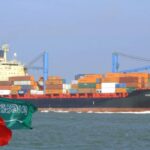

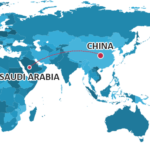

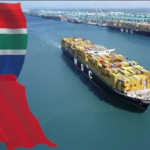

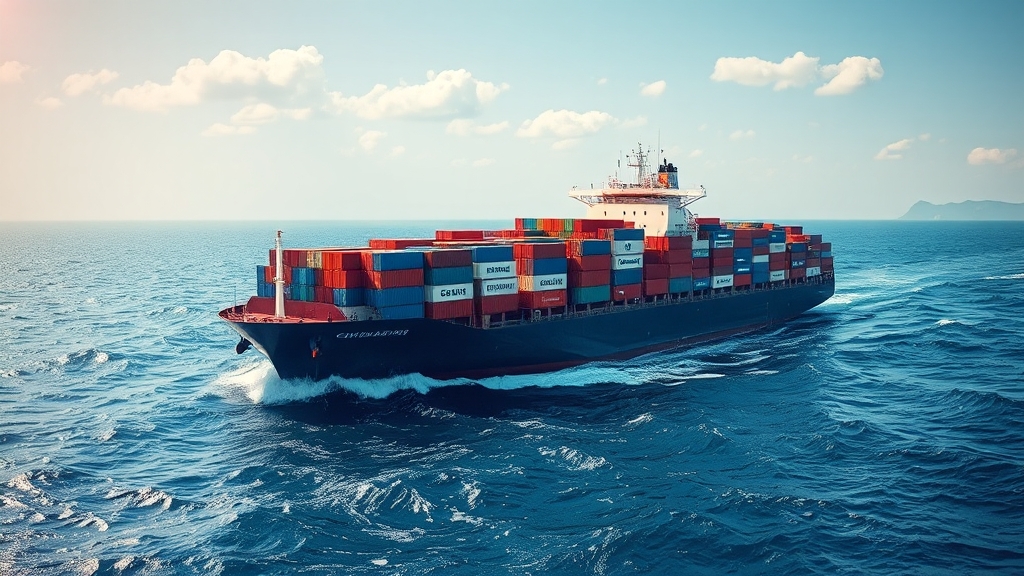
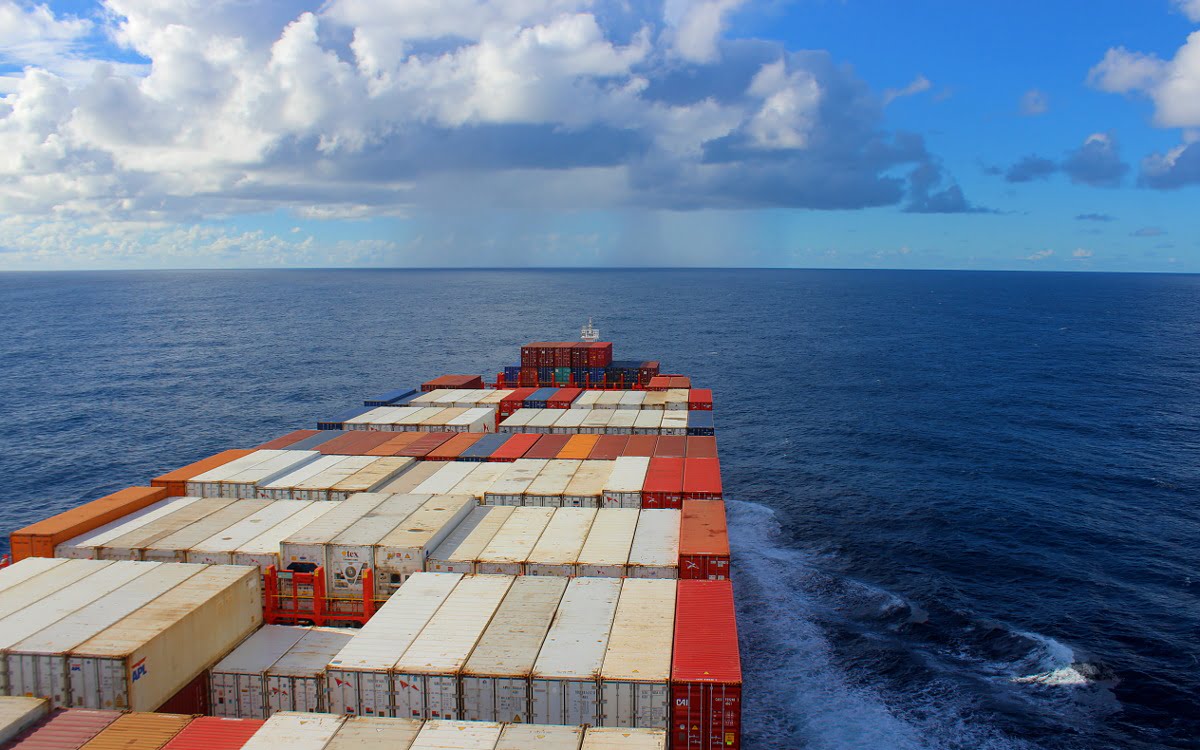

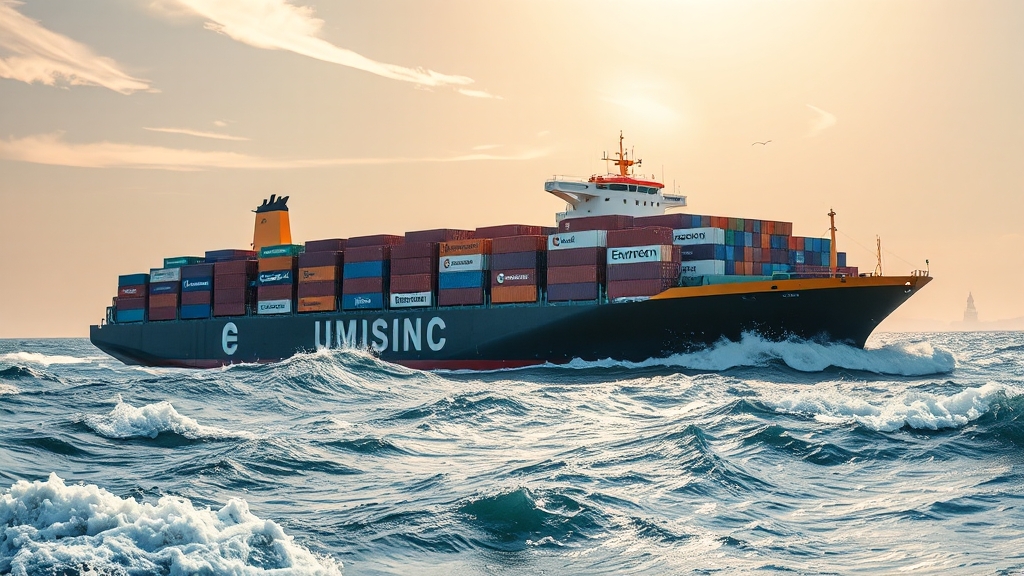
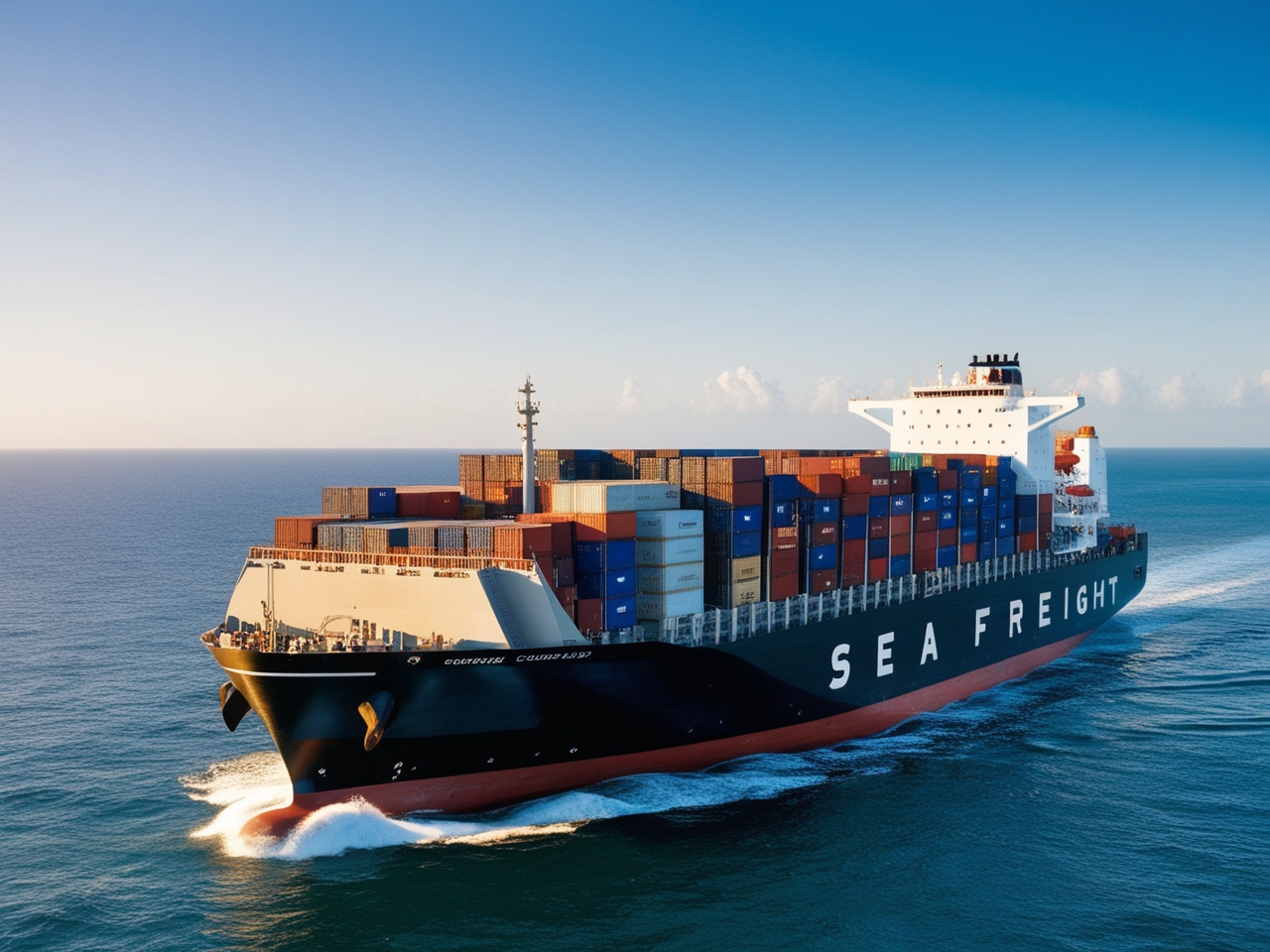





 Afrikaans
Afrikaans Shqip
Shqip አማርኛ
አማርኛ العربية
العربية Հայերեն
Հայերեն Azərbaycan dili
Azərbaycan dili Euskara
Euskara Беларуская мова
Беларуская мова বাংলা
বাংলা Bosanski
Bosanski Български
Български Català
Català Cebuano
Cebuano Chichewa
Chichewa 简体中文
简体中文 繁體中文
繁體中文 Corsu
Corsu Hrvatski
Hrvatski Čeština
Čeština Dansk
Dansk Nederlands
Nederlands English
English Esperanto
Esperanto Eesti
Eesti Filipino
Filipino Suomi
Suomi Français
Français Galego
Galego ქართული
ქართული Deutsch
Deutsch Ελληνικά
Ελληνικά Kreyol ayisyen
Kreyol ayisyen Harshen Hausa
Harshen Hausa Ōlelo Hawaiʻi
Ōlelo Hawaiʻi עִבְרִית
עִבְרִית हिन्दी
हिन्दी Hmong
Hmong Magyar
Magyar Íslenska
Íslenska Igbo
Igbo Bahasa Indonesia
Bahasa Indonesia Gaeilge
Gaeilge Italiano
Italiano 日本語
日本語 Basa Jawa
Basa Jawa ಕನ್ನಡ
ಕನ್ನಡ Қазақ тілі
Қазақ тілі ភាសាខ្មែរ
ភាសាខ្មែរ 한국어
한국어 كوردی
كوردی Кыргызча
Кыргызча ພາສາລາວ
ພາສາລາວ Latin
Latin Latviešu valoda
Latviešu valoda Lietuvių kalba
Lietuvių kalba Lëtzebuergesch
Lëtzebuergesch Македонски јазик
Македонски јазик Malagasy
Malagasy Bahasa Melayu
Bahasa Melayu മലയാളം
മലയാളം Maltese
Maltese Te Reo Māori
Te Reo Māori मराठी
मराठी Монгол
Монгол ဗမာစာ
ဗမာစာ नेपाली
नेपाली Norsk bokmål
Norsk bokmål پښتو
پښتو فارسی
فارسی Polski
Polski Português
Português ਪੰਜਾਬੀ
ਪੰਜਾਬੀ Română
Română Русский
Русский Samoan
Samoan Gàidhlig
Gàidhlig Српски језик
Српски језик Sesotho
Sesotho Shona
Shona سنڌي
سنڌي සිංහල
සිංහල Slovenčina
Slovenčina Slovenščina
Slovenščina Afsoomaali
Afsoomaali Español
Español Basa Sunda
Basa Sunda Kiswahili
Kiswahili Svenska
Svenska Тоҷикӣ
Тоҷикӣ தமிழ்
தமிழ் తెలుగు
తెలుగు ไทย
ไทย Türkçe
Türkçe Українська
Українська اردو
اردو O‘zbekcha
O‘zbekcha Tiếng Việt
Tiếng Việt Cymraeg
Cymraeg יידיש
יידיש Yorùbá
Yorùbá Zulu
Zulu